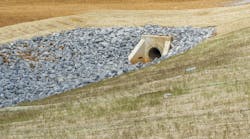James River at "Tipping Point"
Despite achieving improved water quality over the past several decades, the James River in Virginia is at a "tipping point" and will slump back into decline without strong action, according to a new report. The river is the third largest tributary to Chesapeake Bay.
The nonprofit James River Association (JRA) gave the river a grade of 'C' in a report card issued in June. This score reflects the average of nearly two dozen river and habitat health indicators.
A perfect score of 100 means all restoration goals set by various agencies and organizations are met. The James River scored a 52 on this 100-point scale.
"In other words," said JRA executive director Bill Street, "we are halfway to a healthy river."
Many river and habitat health indicators have continued to improve, for instance bald eagles, which scored 100 and phosphorous, which received a 93. But the rapid rate of local development and consequent polluted runoff, said Street, poses a huge threat to the river.According to JRA, the amount of watershed land that will be developed over the next 40 years will surpass the amount developed over the previous 400 and the area population is projected to increase by about one million.
"As resilient as this river has proven itself to be over the centuries, it's difficult to imagine that it will be able to maintain its vitality unless we take concrete steps toward reducing the impacts of development and the effects of polluted runoff," said Street.
The JRA report card indicators fell into four broad categories: fish and wildlife (score of 52), habitat (score of 53), pollution (score of 56) and protection and restoration actions (score of 49).
Street notes that the state has made significant headway in controlling wastewater treatment plant discharge and that similar actions will be necessary to manage runoff in developed areas. Stronger storm water management and erosion-control laws, low-impact development policies and funding for local farmers are among the actions Street referred to.
The full JRA James River report is available at www.jamesriverassociation.org.
Source: Chesapeake Bay Journal

